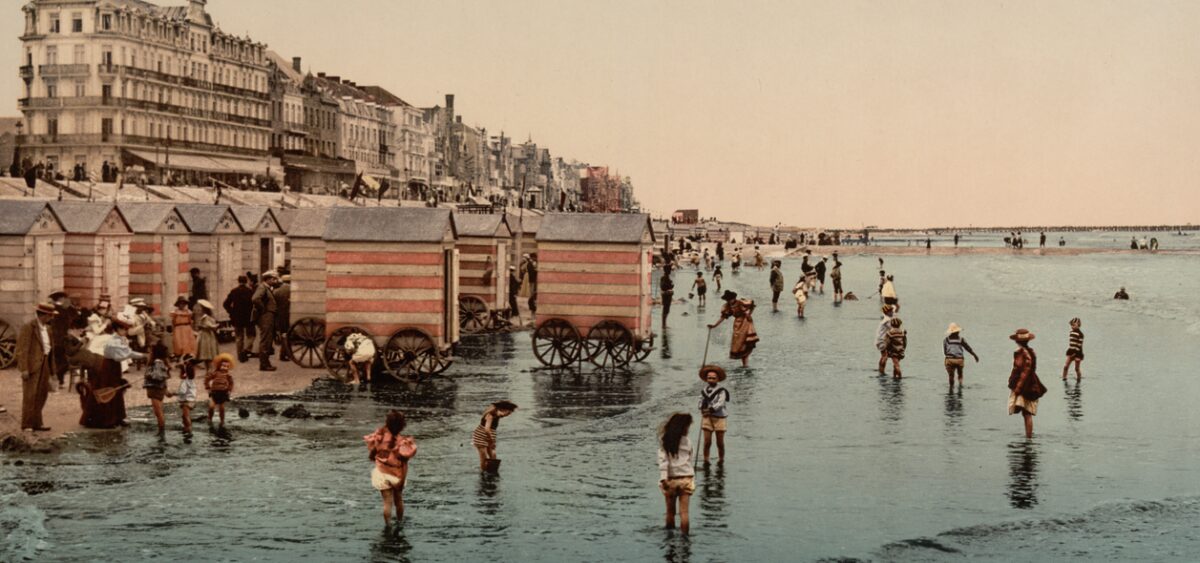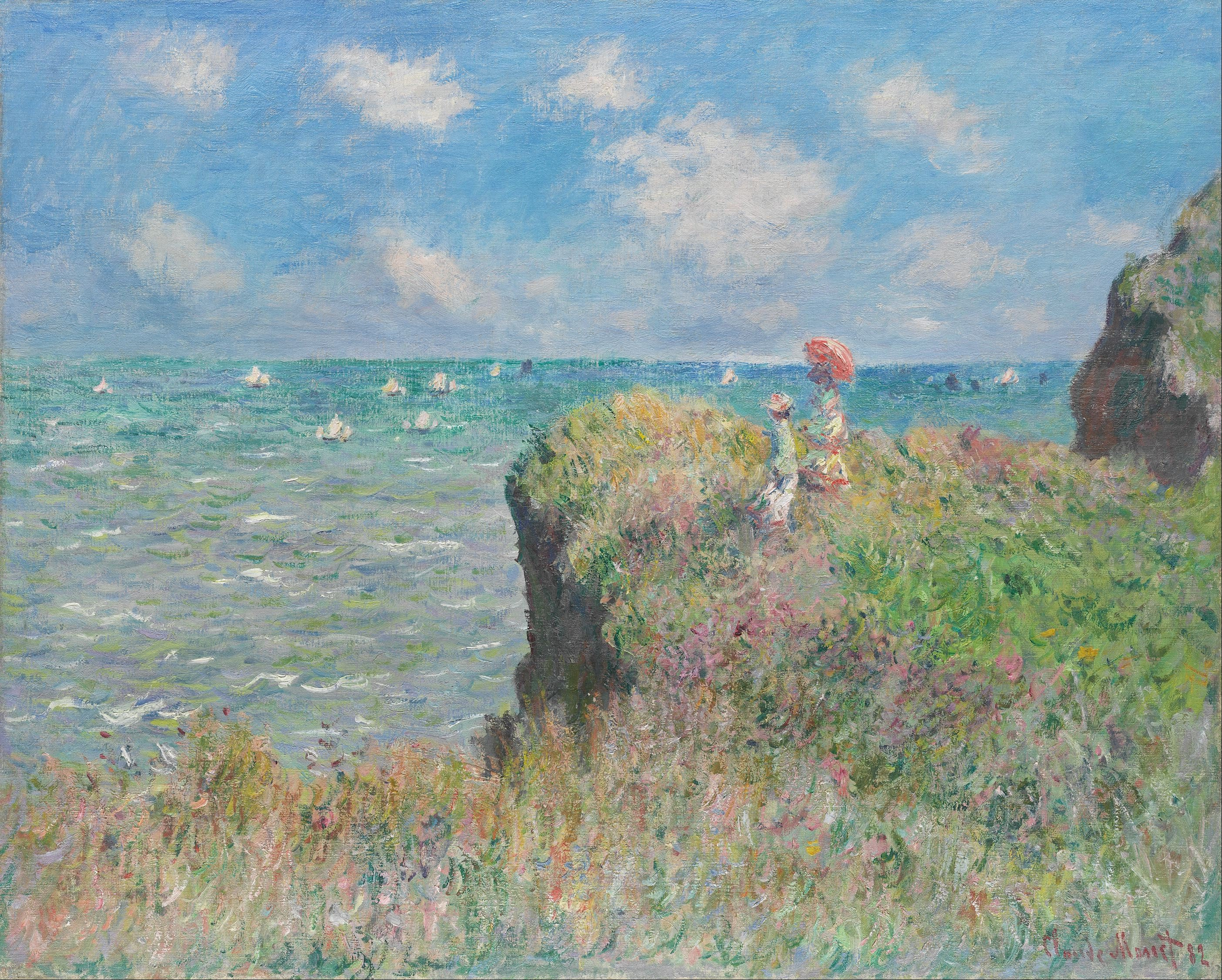
Max Frisch liked to swim. In his diary, he recorded an anecdote about the time he once went to a lake with Bertolt Brecht. For Brecht, nature was something alien – before he decided to get into the water, Frisch had already swum a good few lengths. The list of swimmer writers and intellectuals is long. Before the war, Czesław Miłosz would go to the Legia swimming pool in Warsaw and later, at the University of Berkeley where he lectured, he swam almost every day. Agnieszka Drotkiewicz talks to the editor of the weekly Kultura Liberalna, Piotr Kieżun – a big fan of both literature and swimming.
Agnieszka Drotkiewicz: You run the blog “Świat wpław” [Swimming Through the World], devoted to various aspects of the history of swimming. Let’s start at the beginning, that is, in ancient Greece…
Piotr Kieżun: One would think that swimming was an important element of life back then: an athletic society surrounded by the sea, fighting wars with the Persians on the water, etc. And yet, when I began to research this topic, it turned out that none of the four largest Olympic Games organized in ancient Greece included swimming as a discipline. The Greeks did not swim competitively, they did not race. Admittedly, swimming as a sport competition appears in Pausanias of Athens when he describes local competitions during the games organized in honour of Dionysus. However, when we look at the etymology of the word kolymbos – ‘swimming’ – it turns out that its first meaning is ‘diving’. So there is no question of races, but at best diving. A small disappointment but – as happens in studies of ancient Greece – Plato comes to the rescue. In The Laws, he provides a definition of a foolish man: a fool is a man “unlettered and unable to swim.” This sentence gives food for thought, because once we realize that this is not Plato’s philosophical truth, but a common Greek saying he is quoting, it would mean that the Greeks – despite the fact that they did not race in competitions – mostly knew how to swim. After all, they did not consider themselves a nation of fools.
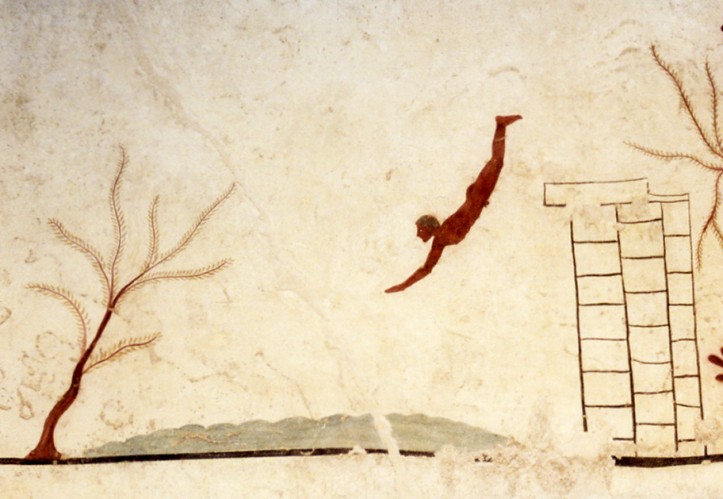
And then – a long, long break in the history of swimming.
In Europe, it basically lasts until the 19th century. All previous interest in swimming in this part of the world considered it mainly as a military skill. The earliest swimming guide we know is Colymbetes (The Swimmer), written at the beginning of the 16th century by the Swiss scholar Nikolaus Wynmann in the form of a Platonic dialogue. The author emphasizes the value of swimming, but if we wanted to learn how to swim from this textbook today, it would be like learning how to cook from an old cookbook: “[…] add a handful of this, a pinch of that, bake” – we know what to do, but not so much how. At the end of the 16th century, the Englishman Everard Digby writes a swimming treatise supplemented with engravings. It includes various swimming styles, but it wasn’t until the 19th century that swimming transitioned from a skill used in the military or for rescue purposes into a sport accompanied by sporting emotions. Like everything that is sporting and modern, this happens in Great Britain: the first indoor and outdoor pools were built there, the first swimming association was created, the first inter-club competitions take place there.
What can the history of swimming tell us about the history of women’s emancipation?
Swimming is closely related to the intimate sphere – today, we swim more or less undressed, and this aroused enormous controversy. When we look at the photographs of 19th-century swimmers, they are all clothed from head to toe, there are no tight outfits, and loose pantaloons were necessary. That’s not to mention sea bathing in Victorian times, when women could at best get wet in the water, sheltered from the male gaze by a bathing car that rode with them into the water. For women who wanted to swim, the first problem was therefore the outfit; the second was the opinion that as members of the ‘weaker sex’ they had no strength, and that therefore swimming was not an activity ‘for women’. There were voices who claimed that when swimming, a woman becomes masculinized and that her reproductive abilities diminish – there were many superstitions of this sort. The fact that women began to swim is due to, as usual, the determined pioneers who bravely faced these social superstitions.
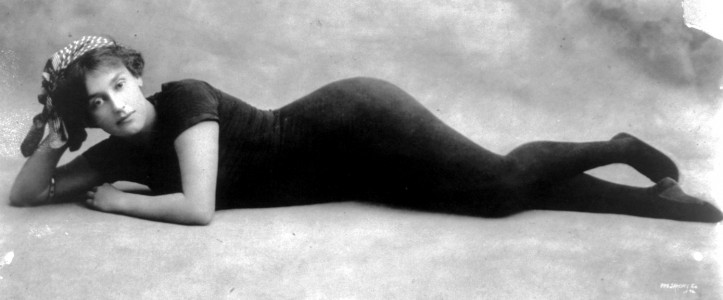
One of the most important women in the history of world swimming is the Australian Annette Kellerman, the champion of New South Wales. In her childhood (during the late 19th and early 20th century) she had major orthopaedic problems, and doctors advised her to wear metal prostheses to strengthen her legs. Fortunately, the girl’s parents came up with the idea of sending her to learn swimming at a newly-opened school run by the Cavill family – the world precursors of the crawl style. So she began swimming for health purposes, and it soon turned out that she was a very capable swimmer. Soon, she became a local champion. She was one of the first women who tried to cross the English Channel in the early 20th century. It seemed impossible, everyone said: “A woman?! No way. A man barely managed.” Captain Matthew Webb swam the channel in 1875. The crossing took him almost a day, but remember that the water in the canal is very cold – in August it has a temperature of 14-17°C. Kellerman did not manage to cross the English Channel – after three attempts she said she had the endurance, but not the brutal strength of a man. Nevertheless, her efforts were noted and encouraged more women.
She was the first woman to swim in a fitted swimsuit, rather than a dress and pantaloons that take on water. Imagine swimming with a few extra kilos at your feet! Kellerman designed a one-piece, body-hugging swimsuit, which of course emphasized the shape of the female body. She later sold it under her name; she had a whole line of swimsuits. In Puritan America, it was a shock: when in 1907 in Massachusetts Kellerman went to the beach in this costume, she was arrested. Nonetheless, she paved the way for others. Like many swimmers at the beginning of the 20th century, she tried her hand in the film industry. She is famous for the fact that in 1916, as a swimming star, she starred in the silent picture, A Daughter of the Gods, where she appeared nude. It was the first time that an actress appeared nude on film. All her life she was a vegetarian and propagated vegetarianism – contrary to the belief that as a swimmer she should consume a lot of meat in order to gain strength. She was also a precursor of synchronized swimming; she performed in swimming spectacles in the United States and Great Britain – they were a combination of underwater vaudeville and swimming. By the way, back then many swimmers earned extra money in this way.
But in the end, another woman managed to cross the English Channel.
In 1926, 22-year-old American Gertrude Ederle achieved this feat. By then, she was already a recognized and titled swimmer – in 1924 she won gold in the women’s 400m relay during the Olympic Games in Paris. She was also very stubborn – her first attempt to cross the channel in 1925 failed. A year later, not only was she the first woman to swim across the Channel (despite the shouts: “Woman, forget it!”); she also improved the previous record set by a man by two hours! She swam for fourteen hours. You have to imagine what a crossing that was! Covered in grease in order to keep warm and to minimize abrasions, she took ‘power drinks’ in the form of chicken broth, served to her on a stick by her coach who was sailing next to her on a small ship. It should be noted that her record remained unchallenged until 1950 when another woman, Florence May Chadwick, improved it. So, women rule swimming! This was very important, because it proved that women are really not inferior and can be even better than men over long distances.
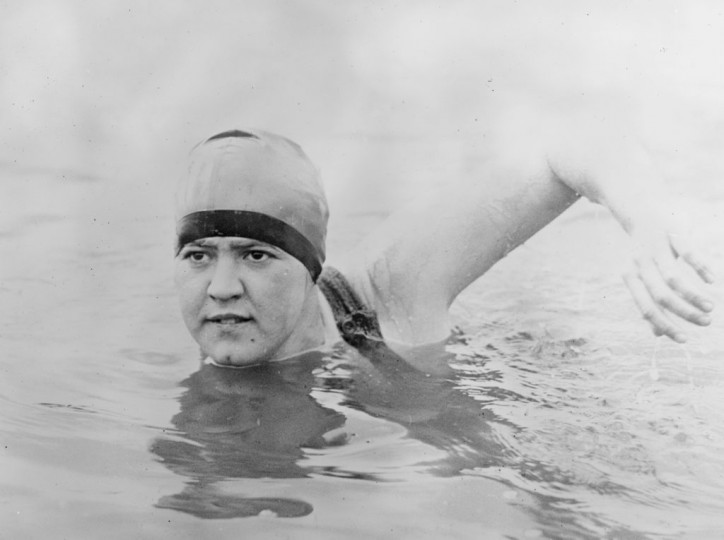
Returning to Gertrude Ederle, in 1926 in New York, two million people greeted her on the streets; flags fluttered, the president welcomed her. Her crossing of the Channel was a national celebration. Like many other swimmers, Trudy received offers to star in films. Unfortunately, in the 1930s she suffered a serious accident and, as a consequence, her promising acting career never took off. However, her achievements inspired Americans of both sexes. I will add here that in Puritan America, not only were women restrictively limited in terms of dress – men were too. At the beginning of the 1920s, men could not wear tight clothes. In old photos, you can often see ‘skirts’ resembling ballerina tutus sewn onto men’s swimming suits at the waist, so that their most indecent area was covered. Men’s costumes also had to be cut quite high – they were not allowed to show the nipples. Men couldn’t even swim in swimming trunks until the 1930s.
It’s not even that long ago!
Up until then, this was closely monitored – police would issue fines, some arrests took place. Fortunately, Europe was a little more liberal than America. And then there was this sudden historical acceleration. The same thing happened in France, and in 1946, in Paris, the first bikini show takes place at the famous Molitor pool. It was only a dozen or so years later! However, it must be noted that not a single model agreed to present a bikini. In the end, a vaudeville actress, for whom showing the body was not a problem, did it.
You mentioned Molitor – one of the topics you write about is famous swimming pools.
The history of swimming pools is very interesting socially – it begins at the end of the 19th century, and accelerates greatly in the 1920s. The way they function shows the societal changes; the buildings created for them show the changes in tastes and trends in architecture. Before the Molitor, there were a lot of pools in Paris, including the Olympic swimming pools built for the 1924 Olympics, where professional training took place. People would also swim in the Seine. Built in 1929, Molitor is an architectural gem; an art deco masterpiece. The architect Lucien Pollet designed it in a paquebot style – a modernist line like in a transatlantic passenger ship, porthole-shaped windows, and openwork barriers on the gallery. Molitor was beautiful, but also accessible to all Parisians.
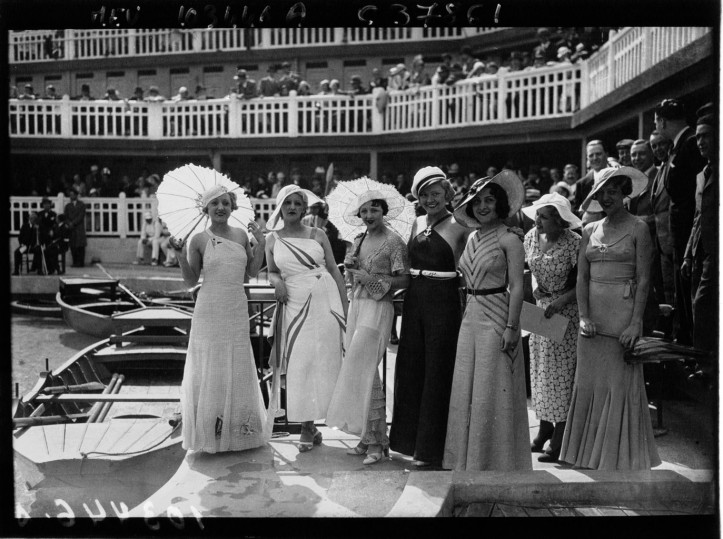
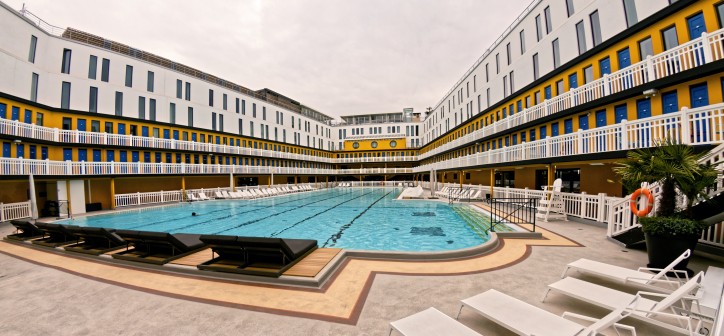
Unfortunately, not only Polish modernism declined in the 1960s, 1970s and 1980s. The same thing happened in France, and in 1989 Molitor closed down and the building began to deteriorate. It was covered in graffiti, and all sorts of various alternative events and concerts took place there. At the beginning of the 21st century, an investor – the Accor hotel chain – turned it into a five-star hotel. Today, the pool is beautifully reconstructed; I would like to go there for a swim. There is only one ‘but’: an hour of swimming with a coach costs €240. The idea of a public swimming pool was therefore not preserved. But at least it has been saved, while many others have been demolished. For example, the beautiful, tiny Neptune pool near the Bonne Nouvelle metro station, which today houses a chocolate museum (!).
You also write about an outdoor pool complex in Zurich, designed by writer and architect Max Frisch.
In 1940, when war raged throughout Europe, Switzerland was non-aligned. So Frisch could easily take part in an architectural competition for the design of a pool complex that was to embody the principle of universal access to sports facilities for the inhabitants of Zürich. The future writer won this competition, and after the war a swimming pool complex was built in the modernist Neues Bauen (New Objectivity) style – functional and clean, and at the same time very light, with an openwork tower for jumping. These pools are still functioning today.
Max Frisch liked to swim. In his diary, he recorded an anecdote about the time he once went to a lake with Bertolt Brecht. For Brecht, nature was something alien – before he decided to get into the water, Frisch had already swum a good few lengths. The list of swimmer writers and intellectuals is long. Before the war, Czesław Miłosz would go to the Legia swimming pool in Warsaw and later, at the University of Berkeley where he lectured, he swam almost every day.
However, the most paradigmatic swimmer-writer was Lord Byron. In his letters, he wrote about his rather impressive swimming stunts. He was one of the first to cross the Dardanelles (today’s swimmers know well that this is not a simple crossing – a famous swimming marathon takes place there). Byron was greatly impressed by the Greek myth of Hero and Leander. Their love was forbidden, which is why Leander swam through the Dardanelles under the cover of darkness, each night, to meet his beloved. This myth appears very often in literature and painting. Byron decided to prove that Leander’s feat wasn’t just a literary invention. And he succeeded! He swam the Dardanelles in 1810. He was 22. He swam breaststroke, because crawl was not known at that time in Europe (it was only popularized at the end of the 19th century). Later, Byron often swam from Lido to Venice; he was able to manage four-hour and longer distances. Interestingly, Byron was first attracted to swimming – just like Kellerman – because of health problems. He had varus legs and swimming was an attempt to regain full mobility.

Do you have any favourite literary passages concerning swimming?
It may sound surprising, but the descriptions of swimming in literature usually bore me. For me, the most important thing in the history of this sport are people – their fortunes, their attempts to overcome their own weaknesses, as well as the challenges they faced. One of the most shocking stories I came across while studying the life stories of swimmers is the story of Alfred Nakache, an Algerian Jew and representative of France, who before the war celebrated triumphs in French swimming pools. He was a multiple national champion, celebrated in the newspapers and a great hope of the French for winning medals at the 1940 Olympics in Tokyo. During the war, Nakache and his family were sent to Auschwitz. His wife and daughter were immediately sent to the gas chamber; he survived. The hope that he would see his daughter and wife again let him survive – he did not know they were killed. Paradoxically, sport also gave him this hope. The SS forced Nakache to take part in humiliating swimming shows in a fire tank located in the camp, but he also went there of his own volition. Noah Klieger, one of the better known journalists and sports activists in Israel, who was also in Auschwitz at the time, mentioned that Nakache, in hiding from the guards, immersed himself in the tank to be able to feel the water for just a moment. After the trauma of war, he returned to swimming – his love of the sport gave him the strength to cope with the loss. He was so determined that in 1948 he competed at the Olympics in London, and just a few months after the war he broke the world record in the relay. And it must be remembered that in the camp he lost almost 40 kilograms – his body was devastated!
Describing the act of swimming is, after all, a very difficult literary task. There is this anime movie, Ghost in the Shell, an apocalyptic story that takes place in the world of androids and humans. The main heroine is an android, an automated contract killer, connected to a network and controlled remotely by the government. The only place where she is able to dissociate herself from the outside world and stimuli is in the water. I remember a scene where the heroine dives into the sea, because only there can she be alone for a moment. And it is like that with swimming – it’s like Zen. While running, you can put in your headphones, someone may call you. When you dive into the water, you are alone with your limitations. And water – which can be an obstacle, because it is 700 times denser than air, yet can also carry you – makes you lighter. Swimmers who have already swam hundreds of kilometres achieve something that in the swimming world is called ‘feeling the water’. At some point, water becomes your friend – it is no longer an enemy or foe. It’s like flying. And it is difficult to describe this state. Such moments give me so much.
Piotr Kieżun:
Editor, head of the book reviews department in the weekly “Kultura Liberalna”. He is interested in the relationship between literature and politics in the 20th century. A swimming enthusiast, he runs a blog about the history of swimming called “Świat wpław” [Swimming Through the World]. Co-founder of the MAKO Sports Club.
Translated from the Polish by Joanna Figiel


